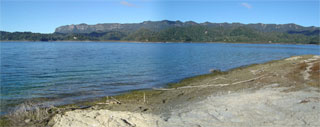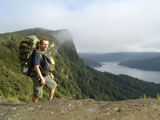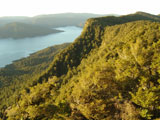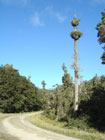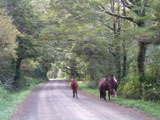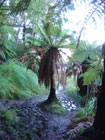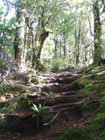
In Urewera national park is preserved largest native forest in North Island. For centuries Te Urewera has been home to the Tuhoe people. The area is formed from young mudstone, siltstone and sandstone, mostly about 10-15 million years old. These sediments were originally part of the sea floor, but about two million years ago uplift brought them above sea level. Erosion has since created major valleys like Aniwaniwa and extensive ridges like Panekiri.
Lake Waikaremoana is the biggest treasure of the park. Lake was created 2 200 years ago by a huge landslide, which blocked a narrow gorge along the Waikaretaheke River. The maximum depth is 248 meters. In 1946 a hydroelectric development lowered the lake level by 5 meters.
The land left exposed when the lake was lowered is slowly regenerating while all around the lake misty mountains stretch off into the distance, cloaked in ancient podocarp and beech forests. There are more than 650 species of native plant present in the park. This national park was established in 1954. The park is with 212 672 hectares largest in north island and fourth in whole New Zealand.
Only one road is leading through the park and even this road is between villages Murupara and Aniwaniwa unpaved. That is almost 80 kilometers long section. Although hitchhiking is easy in the country, on this road it could be diffilut. A trafic is here slight. I met a car per hour. You have to be ready to walk many kilometers ... I was lucky and when I was leaving I got a lift into Rotorua by second car. The driver was a hunter and except hunters and local Maori usualy nobody use this road.
There are several official tracks in the park around Lake Waikareiti and Great Walks called Lake Waikaremoana Great Walk which leads 46 kilometers along the lake.



